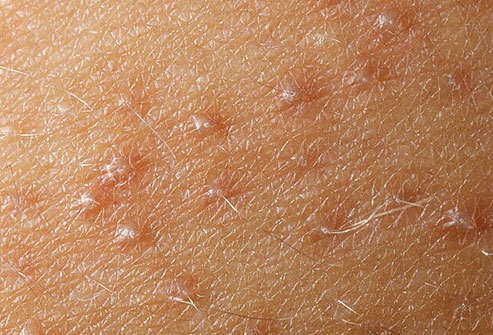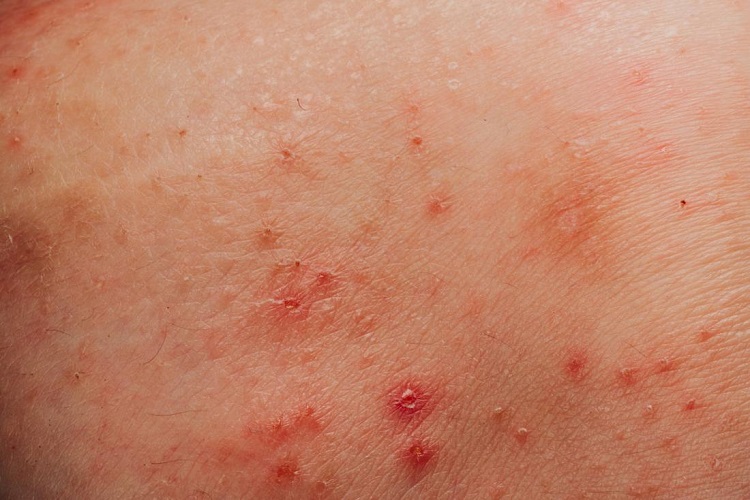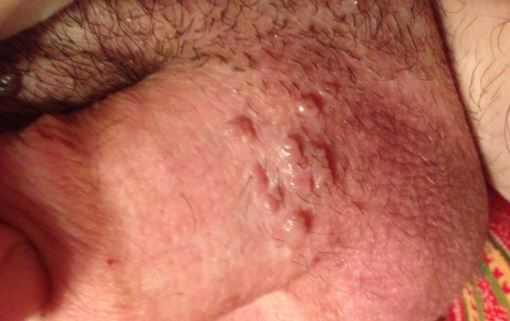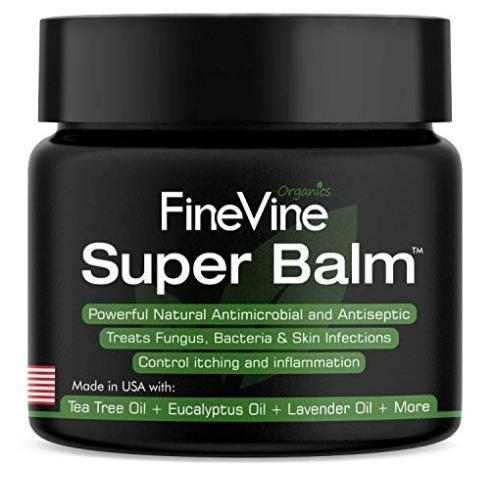A testicular bump/lump is an abnormal mass that can form in your testicles. The testicles, or testes, are egg-shaped male reproductive organs that hang below the penis in a sac called the scrotum. Their primary function is to produce sperm and a hormone called testosterone.
A testicular mass, or lump, is a fairly common condition that can have many different causes. Testicular lumps can occur in men, teenage boys, or younger children. They may be located in one or both of your testicles. Testicular lumps are signs of problems with your testicles. They may be caused by an injury, but they can also indicate a serious underlying medical problem.
Bumps or lumps on the testicles can appear either inside or on top of the scrotal sac of the testicles or balls. The bumps can be either painful or at times painless. According to NHS choices, the lumps are very normal in both older men and small boys.
The lumps that exist on the surface of the scrotum can easily be confused with the normal texture of the skin. A keen look is therefore key to distinguish the cases.
The vast majority of the lumps are caused by benign (non-cancerous conditions). This may not call for any particular treatment as they end up resolving on their own without medical intervention. All the same, it is very essential to check with your professional doctor for the proper diagnosis.
There are some things that you could look out that will help you notice an abnormal lump on the surface of your scrotum or on your balls. You should always raise concern when:
- Encounter a sudden pain.
- Get a dull ache around your genitals.
- Spot redness or warmth of the skin of the scrotum.
- The testicle (testis) or structures around it may be very tender.
- There is some swelling of the scrotum.
- You start feeling sick (nauseated) or being sick (vomiting).
- Begin having a temperature, passing urine more frequently, or pus or blood in the urine (if the cause is an infection).

On the other hand, there are other lumps that can be having a cancer origin or bearing. In order to bring out the difference with the benign ones, the cancer caused lumps have the following symptoms that you could scout for:
- A dull ache in your abdomen or groin
- Heaviness in your scrotum
- Swelling in your abdomen
- A sudden collection of fluid in your scrotum
- Sharp pain
- A dull or tenderness in your breasts
What causes a small bump on testicles or scrotum?
There are so many causes of bumps on the testicles. They include malignant and benign. The malignant ones involves testicular cancer while the non-malignant ones include:
There are different types of lumps that are at times termed as the particular causes of the bumps on the scrotum and balls. They are brought about by different conditions and can therefore be handled differently. They are as follows:
1. Varicocele
This type of testicular lump is the most common type. It occurs in about one in every seven men, according to Weill Cornell Medical College. Enlarged veins in your testicles cause varicocele lumps. They become more noticeable after puberty, which is when blood flow increases in your fully developed testicles.
2. Hydrocele
A buildup of fluid in your testicles causes a hydrocele. According to Mayo Clinic it is estimated that this type of testicular lump occurs in one to two out of every 100 newborn males. Premature babies have a higher risk of developing a hydrocele.
3. Epididymal cyst
An epididymal cyst occurs when the long, coiled tube behind your testicles called the epididymis becomes filled with fluid and can’t drain. If it contains sperm, it’s known as a spermatocele. This form of testicular lump is very common. It most often resolves on its own.
4. Testicular torsion
Testicular torsion occurs when your testicles become twisted, typically due to an injury or accident. This condition most often occurs in boys between the ages of 13 and 17 years old, but it can affect men of all ages. This is a medical emergency that requires urgent investigation and possible treatment.
5. Epididymitis and orchitis
Your epididymis is the structure above your testicle that stores sperm. Epididymitis is an inflammation of your epididymis. A bacterial infection often causes it. This includes some sexually transmitted infections (STI), such as gonorrhea or chlamydia. An infection also causes orchitis, which is an inflammation of your testicle. Bacteria or the mumps virus can cause the infection.
6. Hernia
A hernia occurs when part of your bowel pokes through your groin. This can cause your scrotum to become enlarged.
7. Testicular cancer
Some lumps indicate the growth of testicular cancer. Only a doctor can determine if a lump is cancerous. Testicular cancer isn’t common overall, but it’s the most common type of cancer among American men between the ages of 15 and 34.
8. In grown hairs
In most men the white spots on testicles are the extension of the hair follicles which will appear like raised pimples stretching from the thin scrotum skin. However, poor shaving habits can cause you to develop white or cream like spots around the scrotum and penile shaft.
Poor techniques of hair removal can cause white and hard spots on the testicles. After shaving the pubic area, the hair in some men tend to grow downward into the skin and form what is described as the ingrown hair.
The ingrown hair tend to form bumps on the testicle skin and around the penis seen mostly in young men. It may begin as a single spot on the scrotum but tend to increase and spread all over the testicles and sometimes around the anus.
There some other factors that on rare occasions, can lead lumps or bumps on the scrotum or your balls. They are classified as below:
- Squamous cell carcinoma: This is a cancer of the skin of the scrotum.
- Generalized edema: This occurs when there is too much fluid in the body as a whole.
- Syphilis: This is a sexually transmitted infection. It can sometimes cause soft lumps called gummas. The lumps appear to be painless then disappear after some time. However, the condition continues to develop in the body to bring effects later.
- Roundworms: Infection with worms can block the drainage system of the body’s fluids.
- Henoch-Schönlein purpura: This is a condition that can cause a skin rash, tummy (abdominal) pain and joint pains. Sometimes the testicles can also become inflamed. It develops because of a reaction of the immune system to a trigger, commonly an infection. Most people who get Henoch-Schönlein purpura are children.
- Allergic rashes.
- Sarcoidosis. This is a condition where tiny lumps, known as granulomas, develop at various sites within your body due to inflammation. Usually it affects the lungs, but occasionally they happen in the scrotum.
- Hidradenitis suppurativa. These are repeated (recurrent) boils of the skin.
Small bump on testicle sack no pain
These spots could either be brought about by Fordyce spots or sebaceous cysts. It is always key to know how they differ:
- Fordyce spots are visible oil-secreting sebaceous glands that are found in large percentage of population. These are considered normal structural variant rather than a disease. Sebaceous glands secrete oily substance called sebum that keeps the skin smooth and lubricated.
- Fordyce spots appear as small, red or white bumps on the scrotal skin, that are typically painless. They are considered benign and require no treatment.
- A painless lump over the scrotal skin is very likely to be sebaceous cyst. It is also called epidermal cyst. These cysts are common in younger age group. The skin that bears hair is kept soft by the oil (sebum) secreted by sebaceous glands. These glands open into the hair follicles.
- When the ducts draining the glands gets blocked, they become distended by their own secretions. Eventually, enough sebum accumulates to form a smooth, firm nodule in the skin. This painless cystic swelling is called a sebaceous cyst.
Pimple like bump on scrotum
A pimple around the genitals appears to be black, white or red. Some of them are pus-filled and can cause a lot of discomfort. According to ZocDoc, you get a pimple on the skin of your scrotum because the area around the scrotum is always moist.
Apart from that, the friction from thighs and some of clothing you put on can cause some irritation that will cause the pimple like symptoms on the scrotum. Poor shaving techniques, methods or tools will lead to razor bumps that look like pimples.
Itchy bumps on balls
Folliculitis
On rare occasions when it occurs that one of your testicular hair follicles may become inflamed, sometimes when you try to pluck or shave the hair, it leads to folliculitis.
The follicle may also get infected with bacteria called staphylococcus aureus. It appears as white-headed pimple around the hair follicle that may be itchy. It may later turn red and painful.
It may disappear on its own with proper hygiene, but sometimes require medical treatment. Warm compress, few times a day, may provide some relief. If it doesn’t improve with supportive measures or get worse, then an antibiotic treatment may be required.
White itchy bumps may also indicate some medical conditions that include:
1. Genital herpes

It is caused by a type of the herpes simplex virus (HSV) that enters your body through small breaks in your skin or mucous membranes. The genital signs and symptoms include:
- Small red bumps, blisters (vesicles) or open sores (ulcers) in the genital, anal and nearby areas
- Pain or itching around the genital area, buttocks and inner thighs
The initial symptom of genital herpes usually is pain or itching, beginning within a few weeks after exposure to an infected sexual partner. After several days, small red bumps may appear. They then rupture, becoming ulcers that ooze or bleed. Eventually, scabs form and the ulcers heal.
2. Genital warts.
This condition shows some symptoms that enable it to be pointed out:
- Small, flesh-colored or gray swellings in your genital area
- Several warts close together that take on a cauliflower shape
- Itching or discomfort in your genital area
- Bleeding with intercourse
3. Jock itch
This term is used to refer to an inflammation and irritation of the groin area, may spread to the penis and scrotum then result in itching of the skin of the penis and scrotum. It is caused by a group of fungi called dermatophytes.
These fungi naturally live on your skin and do not cause problems. However, when you remain in sweat-soaked clothes after exercising, the lengthy exposure to moisture can allow the fungi to multiply quickly. When you have an overgrowth of dermatophytes in your groin area, it causes the infection known as jock itch.
The fungi that cause jock itch are highly contagious. You may get the fungal infection through close personal contact with an infected person or through contact with the unwashed clothing of an infected person. This condition is associated with:
- Excess moisture and sweating
- Tight underwear
- Rubbing and friction of skin
- Fungal infection
- Obesity
- Diabetes
- Long term use of corticosteroids
- Improper hygiene of groin area
For the jock itch conditions, we highly recommend Antifungal Balm by FineVine (Check price on Amazon)
4. STDs
Sexual transmitted disease could also be a cause of testicular bumps. Though not always, bumps on the testicles might be as a result of STDs such as Herpes, with pimples on the scrotum as the major symptom. It hard for you to tell whether it is a genital wart or a pimple, that’s is why you are advised to seek the attention of your doctor as soon as possible.
5. Scrotum Eczema or Dermatitis
It is characterized by severe burning-like itching, redness, scaling and thickening of scrotal skin. The common causes of scrotum eczema or dermatitis include allergens, irritants and stress.
In case of a pimple on your scrotum leading to a bump, the following practices help:
- Keep the groins clean and dry.
- Wash the area frequently with soap and water. This should be done after any work that involves sweating.
- Wear loose cotton underwear; avoid tight-fitting clothes.
- You may need a topical antifungal cream such as miconazole, clotrimazole or tolnoftate- as deemed suitable by your physician. If scrotum rash doesn’t go away in 2 weeks, then you may need to see a dermatologist.
Hard bumps on scrotal sack
If you find a small hard lump resembling a pea in your testicle, or notice any other differences that do not seem normal, then you should be on the lookout for your healthcare provider. Contact your doctor if:
You realize a lump as a result of collection of tubes above the testicles. This may be a collection of widened veins. Similarly, you may have pain or swelling in the scrotum. This may be an infection or a fluid-filled sac causing the blockage of blood flow to the area. A lump in the testicle is mostly the first sign of testicular cancer.
According to MedHelp, a sebaceous cyst is often described as a hard pimple on the scrotum sack and it is likely to be felt just under the skin. The keratin substance in the bumps is the one that makes the bump to look hard. This is because the sebaceous cyst is said to be blocked by sebaceous glands, hair follicles that are swollen and sometimes too much production of testosterone in men.
White bumps on testicles
It is very essential for you to understand that white spots on penis and scrotum affect males regardless of their age. However, it is most commonly reported to take place in young male. Although the spots might not cause any harm, it can be a source of embarrassment and affect your sexual life.
White bumps on testicles appear in the following ways:
- White or cream in color
- Dome-like structures
- Smooth and are present over the dorsal testicular surface
- Size of these spots may vary from small to large
- The spots are filled with a combination of breakdown products of sebum and skin keratin tissues.
The white spots over the ball sack are not contagious and cannot be transmitted from one person to another via physical or sexual contact.
When you manifest itchy white bumps in his scrotum, there are various reasons why these have occurred. It could be because of heat rash due to infection, poor hygiene, excessive perspiration, or other skin problems.
- Jock itch: It is a ringworm in the scrotum or penile shaft.
- Scabies: This is caused by small mites thriving on the skin or pubic hairs.
- Psoriasis: This is a condition that is manifested by chronic skin rash.
- Herpes: Clustered bumps that is transferred sexually. These are painful, itchy and blister-like.
- Candidiasis: This is a sexually transmitted disease caused by a fungus.
How to get rid of bumps on testicles
The treatment approach available depends on the type and cause of the bump in the testicle or the scrotal sac.
1. Varicocele
Pain from a varicocele usually subsides without treatment. However, your doctor may prescribe pain medication or advise you to use over-the-counter pain relievers.
In cases of recurring episodes of discomfort, you may need surgery to reduce the congestion in your veins. The surgery may involve tying off the affected veins or diverting blood flow to those veins through other methods.
This causes blood to bypass those veins, which eliminates the swelling.
2. Hydrocele
Treatment for a hydrocele lump may also involve surgery, but it most often clears up on its own by age of two years. The surgery involves making a small incision in the scrotum to drain excess fluid.
3. Epididymal cyst
An epididymal cyst doesn’t require treatment unless it causes pain or discomfort. You may present a need that will call for a surgery. During this procedure, your surgeon will remove the cyst and seal your scrotum with stitches that usually dissolve within 10 days.
4. Testicular torsion
Testicular torsion requires immediate surgery to untwist your testicle and restore blood flow. Your testicle can die if you do not get treatment for the torsion within six hours, [The American Cancer Society]. If your testicle dies, your doctor will have to remove it surgically.
5. Epididymitis and orchitis
Your doctor can treat infections in your epididymis or testicles with antibiotics if bacteria are the cause. In the case of an STI, your partner may also need to be treated.
6. Hernia
A hernia is often treated with surgery. Your doctor may refer you to a hernia specialist for treatment.
Testicular cancer
Testicular cancer is treated using surgery, chemotherapy, radiation, and other methods. Your specific course of treatment will depend on how early your cancer is detected and other factors. Surgical removal of your testicle may help stop the cancer from spreading to other parts of your body.
There are other routine management techniques that can be employed to see you through the bumps on the scrotum. They are mainly hygiene related measures that you can implement. They include:
- Washing your balls well: You will notice a larger amount of pimples on the testicles during the summer months when you sweat more. Just ensure that you clean the testicles with an antibacterial wash and a wash cloth. The antibacterial wash will clear away the sweat and oils, while the wash cloth helps exfoliate the dried and dead skin cells.
- Use antibacterial cream: If you take your shower in the evenings, use a topical antibacterial cream on your testicles. This will help them heal and prevent additional bacterial growth. If you shower in the morning, you may want to apply cornstarch or baby powder to help keep the area dry and free of any moisture.
Itching in the area of the penis or external genital organs occurs for many of the same reasons that itching occurs elsewhere on the body.
Infections, which include those that cause sexually transmitted diseases (STDs) are all also contributors and therefore medications used for these condition will come in handy to help you at your time of need.
References and Sources
- http://www.healthline.com/health/testicle-lump
- http://buddymd.com/small-painless-lump-on-the-scrotum-sebaceous-cyst-vs-other-causes-and-management
- http://www.everydayhealth.com/testicular-cancer/guide/symptoms/
- http://www.nhs.uk/Conditions/Testicular-lumps-benign/Pages/Introduction.aspx
- http://patient.info/health/scrotal-lumpspainswelling
- http://www.mademan.com/mm/how-get-rid-pimples-testicles.html


